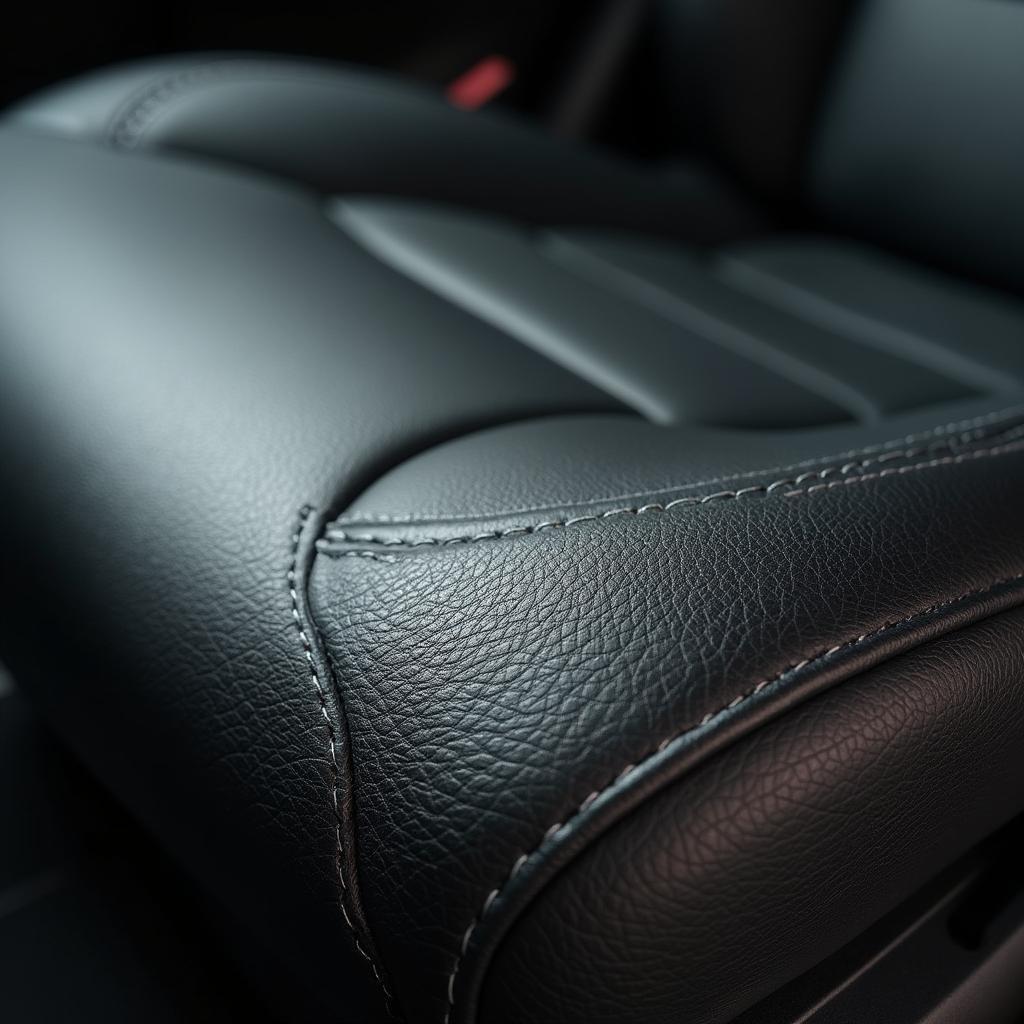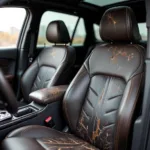Leather car seats are a luxurious addition to any vehicle, but they’re not immune to damage. Scuffs are a common problem, often caused by everyday items like bags, shoes, or even jewelry. Luckily, you don’t need to be a car repair expert to tackle these blemishes. With a few simple techniques and the right materials, you can restore your leather car seat to its former glory.
Assessing the Damage: Is it Really a Scuff?
Before you start applying any products, it’s crucial to identify the type of damage. A scuff is a superficial mark that hasn’t penetrated the leather’s surface. These are usually lighter in color than the surrounding leather and might feel slightly rough. Deeper scratches or cuts require different repair approaches.
DIY Scuff Repair: Effective Methods You Can Try at Home
There are a few popular methods for repairing scuffs on leather car seats. Here’s a step-by-step guide to help you through the process:
1. Leather Cleaning: The Essential First Step
No matter which repair method you choose, always start by cleaning the affected area. Use a gentle leather cleaner and a microfiber cloth to remove any dirt, dust, or debris. This ensures better product penetration and prevents further scratching during the repair process.
2. The Magic of Leather Conditioner: Minor Scuffs Be Gone
For minor scuffs, a high-quality leather conditioner can work wonders. The conditioner helps to moisturize and soften the leather, making the scuff less noticeable. Apply a small amount of conditioner to a clean microfiber cloth and rub it gently onto the scuff using circular motions.
3. Leather Recoloring Balm: For Stubborn Scuffs
If the scuff is more pronounced, consider using a leather recoloring balm. These balms contain pigments that can help to restore the leather’s original color. Choose a balm that closely matches the color of your car seat and follow the manufacturer’s instructions carefully.
4. Seeking Professional Help: When to Call the Experts
While DIY methods can effectively address minor scuffs, some situations call for professional intervention:
- Deep Scratches or Tears: These require specialized tools and techniques to repair.
- Extensive Damage: If the scuffing covers a large area, professional repair might be the most cost-effective solution.
- Uncertainty: If you’re unsure about the repair process or uncomfortable attempting it yourself, a professional detailer or upholstery shop can provide expert assistance.
“Remember, leather is a natural material that ages over time. Regular cleaning and conditioning can help prevent premature wear and tear, keeping your leather car seats looking their best for years to come,” advises John Miller, a veteran automotive upholstery specialist with over 20 years of experience.
Prevention is Key: Protecting Your Leather Seats
While knowing how to repair scuffs is essential, preventing them in the first place is even better. Here are some tips to keep your leather car seats looking pristine:
- Regular Cleaning: Use a leather cleaner and a microfiber cloth to wipe down your seats weekly.
- Conditioning: Apply a leather conditioner every few months to keep the leather supple and prevent cracking.
- Seat Covers: Consider using seat covers if you frequently transport children, pets, or cargo.
- Avoid Sharp Objects: Be mindful of what you bring into your car and avoid placing sharp objects on the seats.
Frequently Asked Questions about Leather Car Seat Scuff Repair
Can I use a magic eraser on leather car seats?
While magic erasers are effective on various surfaces, it’s not recommended to use them on leather car seats. Their abrasive nature can damage the leather’s finish.
Is it possible to completely remove a scuff from leather?
The success of scuff removal depends on the severity of the damage. While minor scuffs can often be made virtually invisible, deeper scratches might require professional repair or replacement.
How often should I condition my leather car seats?
Conditioning your leather car seats every 3-4 months is generally sufficient. However, if you live in a dry climate or frequently park your car in direct sunlight, you might need to condition them more often.
Can I use household products to clean my leather car seats?
It’s best to avoid using harsh chemicals or household cleaners on leather car seats. Opt for cleaning products specifically designed for leather to prevent drying or damaging the material.
How can I prevent color transfer from my clothes to my leather seats?
Some fabrics, especially new jeans, can transfer color onto light-colored leather seats. To prevent this, consider using a leather protectant spray that creates a barrier against dye transfer.
Need Help with Leather Seat Repair?
Scuffed leather car seats can be an eyesore, but with the right approach, you can restore their appearance and maintain the luxurious feel of your car’s interior. Remember, regular cleaning and preventative measures are crucial for keeping your leather seats in top condition for years to come. For additional help and expert advice on leather seat repair, check out these resources:
- How to Repair Leather Seats in Car
- How to Repair Car Leather Seat Cut
- Car Leather Seat Tear Repair
- Best Vinyl Repair Kit for Car Seats
- How to Repair Leather Seats in Car Tear
And if you’re ever in doubt or facing a particularly challenging repair, don’t hesitate to reach out to our team of car care experts. You can reach us 24/7 via WhatsApp at +1(641)206-8880 or email us at [email protected]. We’re always happy to help you keep your car looking its best!



